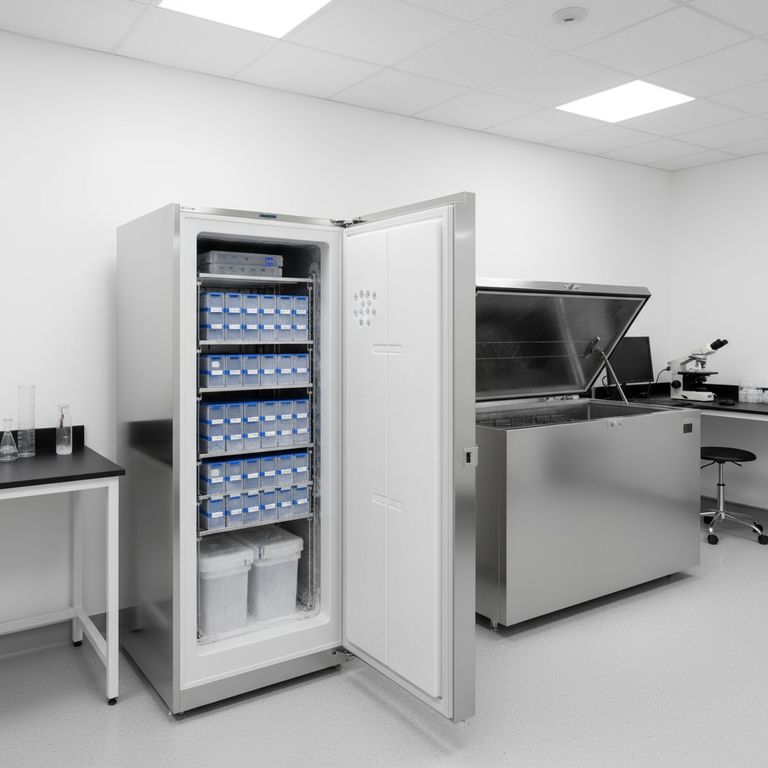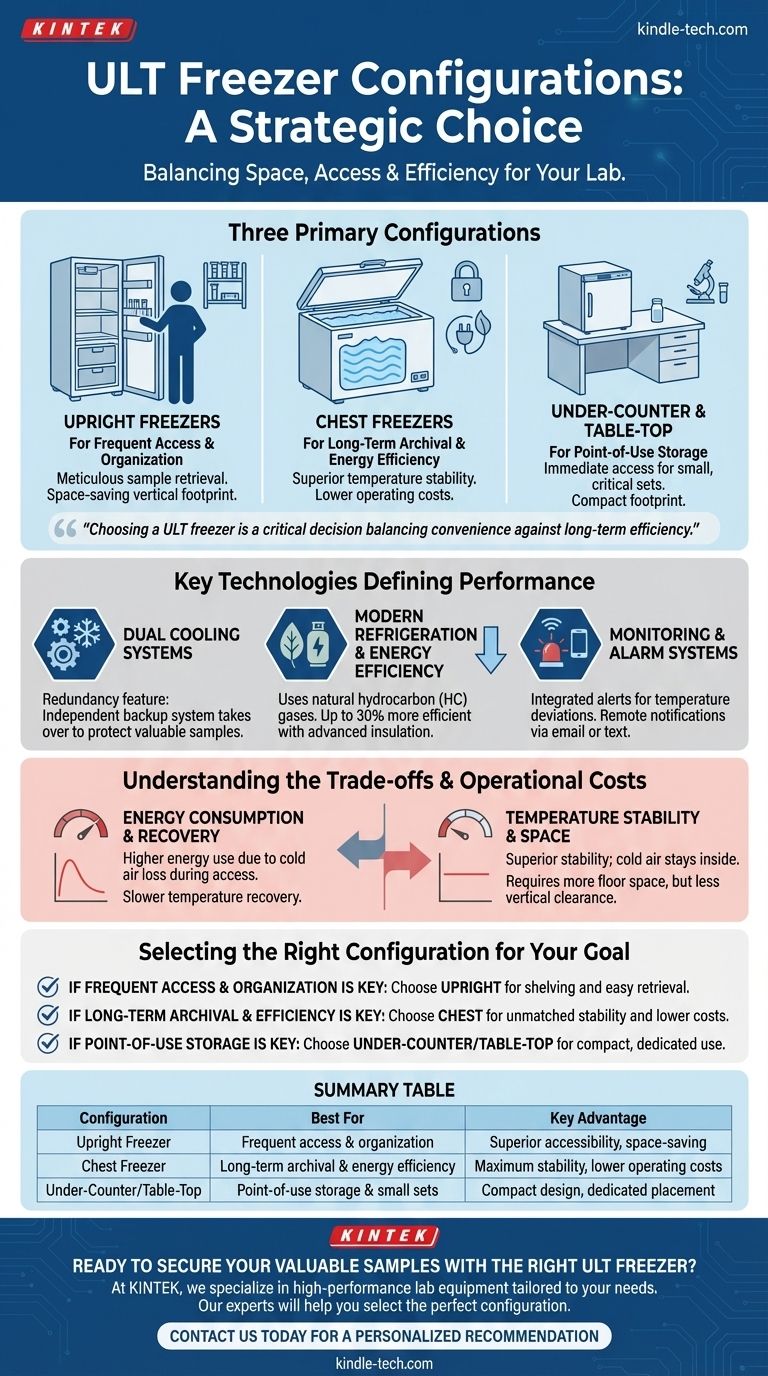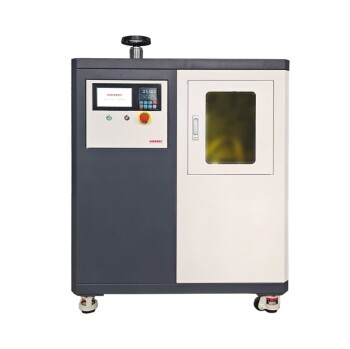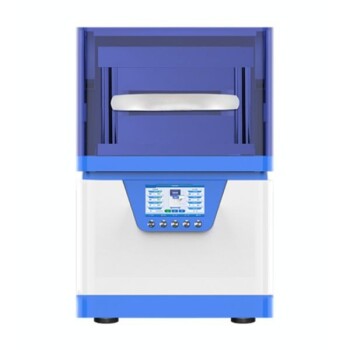At a high level, Ultra-Low Temperature (ULT) freezers are available in three primary configurations: upright, chest, and under-counter or table-top models. The ideal choice is not based on preference but is a strategic decision dictated by your laboratory's space, sample access frequency, and long-term energy consumption goals. Each design offers a distinct balance of accessibility and operational efficiency.
Choosing a ULT freezer configuration is more than a matter of size. It's a critical decision that balances the convenience of frequent sample access (upright models) against superior long-term energy efficiency and temperature stability (chest models).

A Breakdown of ULT Freezer Configurations
Understanding the inherent design advantages of each freezer type is the first step in matching the hardware to your specific scientific or industrial application.
Upright Freezers: For Accessibility and Organization
The upright freezer is the most common configuration, resembling a standard household refrigerator. Its key advantage is accessibility.
Internal shelves and drawers allow for meticulous organization, making it easy to locate and retrieve specific samples without disturbing the entire inventory. This design is ideal for labs where samples are accessed frequently.
Their vertical orientation also makes them space-saving in terms of floor footprint, a critical factor in crowded laboratory environments.
Chest Freezers: For Energy Efficiency and Stability
Chest freezers are built for long-term archival and maximum thermal efficiency. When the lid is opened, the dense, cold air tends to remain inside the chamber, unlike in an upright model where it spills out.
This simple principle of physics makes chest freezers significantly more energy-efficient and allows them to maintain a more stable internal temperature, even with brief openings. They are the optimal choice for archiving invaluable biological materials like DNA, plasma, or tissues that are accessed infrequently.
Under-Counter & Table-Top Freezers: For Point-of-Use Storage
These compact models are designed for minimal storage needs or for placement at a specific workstation. They provide immediate, point-of-use access to a small set of critical samples.
Their small capacity makes them unsuitable for large-scale storage, but they serve a vital role in workflows that require a dedicated, ultra-low temperature environment right at the bench.
Key Technologies That Define Performance
Beyond the physical shape, modern ULT freezers are defined by the technology inside them. These features directly impact sample safety, operational costs, and reliability.
The Critical Role of Dual Cooling Systems
Many high-quality ULT freezers are equipped with a dual refrigeration system. This is a crucial redundancy feature.
If one primary cooling circuit fails, a completely independent backup system automatically takes over, maintaining the target temperature (typically around -70°C instead of -80°C) and protecting billions of dollars worth of samples from being lost.
Modern Refrigeration and Energy Efficiency
Modern ULT freezers have largely abandoned older greenhouse gas refrigerants in favor of natural hydrocarbon (HC) gas mixtures, such as ethane and propane. These are not only better for the environment but can improve energy efficiency by up to 30%.
Coupled with advanced vacuum insulation and "ECO modes" for periods of low usage, these features work to reduce the significant electrical draw of the unit.
Monitoring and Alarm Systems
Given the value of the materials stored inside, integrated alarm systems are standard. These systems provide audible and visual alerts for temperature deviations or power failures.
Crucially, they can also connect to facility networks to send remote alerts via email or text message, ensuring that designated personnel can respond to a failure at any time, day or night.
Understanding the Trade-offs and Operational Costs
Selecting a ULT freezer involves balancing competing priorities. An informed decision requires acknowledging the inherent trade-offs of each design.
Energy Consumption: A Major Factor
A ULT freezer is a power-intensive piece of equipment, with some cascade refrigeration systems consuming up to 20 times more energy than a typical household refrigerator.
This is where the configuration choice has a direct financial impact. A chest freezer's superior thermal efficiency translates directly into lower long-term electricity costs compared to an upright model of the same volume.
Temperature Uniformity and Recovery
When you open an upright freezer, the rush of cold air out and warm air in creates temperature fluctuations. The freezer must then work hard to recover its setpoint, potentially stressing samples near the door.
A chest freezer offers superior temperature stability and faster recovery times precisely because the cold air is naturally contained within its chamber during access.
Lab Space and Workflow
While an upright freezer has a smaller floor footprint, its swinging door requires significant clearance. A chest freezer needs more floor space but only requires vertical clearance for its lid. The physical layout of your lab and the flow of personnel must be considered.
Selecting the Right Configuration for Your Goal
Your final decision should be guided by your primary application. Use these points as a definitive guide to match the freezer to your lab's needs.
- If your primary focus is frequent sample access and organization: An upright freezer is the superior choice for its shelving and ease of retrieval in a high-traffic workflow.
- If your primary focus is long-term archival and energy efficiency: A chest freezer is the definitive option for its unmatched temperature stability and lower operating costs.
- If your primary focus is point-of-use storage for a small, critical sample set: An under-counter or table-top model provides the necessary performance in a compact, dedicated footprint.
By aligning the freezer's configuration with your lab's specific workflow and storage strategy, you ensure both the integrity of your samples and the efficiency of your operations.
Summary Table:
| Configuration | Best For | Key Advantage |
|---|---|---|
| Upright Freezer | Frequent sample access & organization | Superior accessibility, space-saving footprint |
| Chest Freezer | Long-term archival & energy efficiency | Maximum temperature stability, lower operating costs |
| Under-Counter/Table-Top | Point-of-use storage & small sample sets | Compact design, dedicated workstation placement |
Ready to secure your valuable samples with the right ULT freezer?
At KINTEK, we specialize in providing high-performance lab equipment, including a full range of Ultra-Low Temperature freezers tailored to your specific laboratory needs. Whether you require the frequent access of an upright model, the energy efficiency of a chest freezer, or the compact convenience of a table-top unit, our experts will help you select the perfect configuration to protect your research and optimize your workflow.
Contact us today to discuss your ULT freezer requirements and get a personalized recommendation. Reach out via our contact form to ensure your samples are stored with maximum safety and efficiency.
Visual Guide

Related Products
- 158L Precision Vertical Ultra Low Freezer for Laboratory Applications
- 808L Precision Laboratory Vertical Ultra Low Temperature Freezer
- 508L Advanced Vertical Ultra Low Temperature Freezer for Critical Laboratory Storage
- 408L Advanced Vertical Laboratory Ultra Low Temperature Freezer for Critical Research Material Preservation
- 608L Essential Laboratory Ultra Low Temperature Freezer For Critical Sample Preservation
People Also Ask
- In what fields are ultra low temperature freezers most commonly used? Essential for Biomedical, Clinical, and Research Labs
- What temperature range do Ultra-Low Temperature freezers maintain? The -80°C Standard for Sample Integrity
- What are ultra low temperature freezers used for? Preserving Critical Biological Samples for Decades
- What features do ultra-low temperature freezers typically include? Ensuring Absolute Sample Security
- What makes Ultra-Low Temperature freezers energy efficient? Key Design & Operational Strategies



















